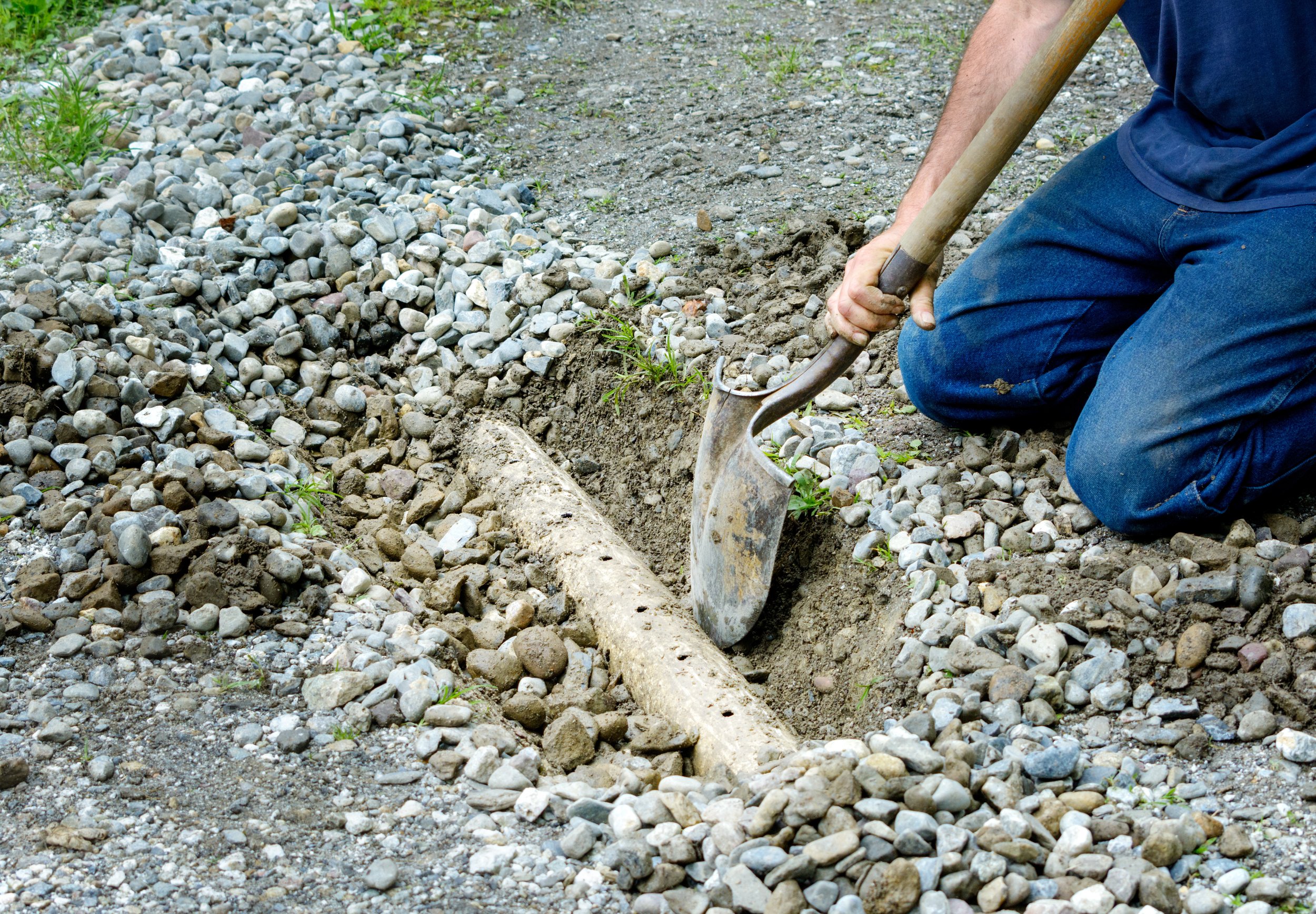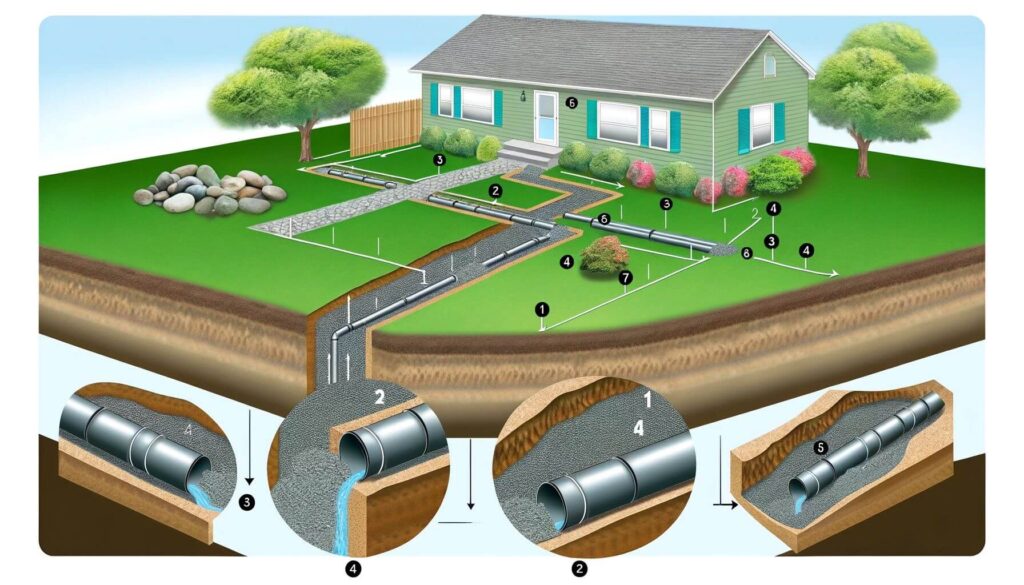Recognizing the Significance of a Septic System French Drain for Effective Wastewater Management
The integration of a septic tank French drain system plays a critical role in reliable wastewater management, yet its relevance is typically forgotten. Comprehending the technicians and benefits of such a system can illuminate its essential function in stopping dirt saturation and enhancing groundwater high quality.
What Is a Septic System French Drainpipe?
A sewage-disposal tank French drainpipe is a specific water drainage system made to manage wastewater and stop flooding in locations where standard water drainage methods may be inadequate. This system integrates the capabilities of a conventional sewage-disposal tank with a French drainpipe, allowing for effective wastewater treatment and efficient water diversion.

Constructed using perforated pipelines stocked gravel trenches, a French drainpipe helps with the activity of water away from essential areas. It enables the seepage of excess water right into the bordering dirt, promoting efficient drainage while shielding the septic tank's integrity. The combination of these 2 systems is particularly advantageous in regions with heavy rains or bad drain, guaranteeing the durability and functionality of wastewater management systems while safeguarding public health and the environment.

Exactly How It Functions in Wastewater Administration
In wastewater management, the combination of a septic system and French drainpipe plays a crucial duty in making certain reliable therapy and disposal of sewer. The septic tank functions as the first line of protection, where wastewater goes through initial treatment via sedimentation and anaerobic digestion. Solids work out near the bottom, forming sludge, while lighter materials, such as oil and oils, float to the top, developing a residue layer. This procedure minimizes the organic load of the wastewater before it relocates forward.
Once the wastewater is made clear, it flows right into the French drain system, which is designed to promote further therapy and risk-free dispersal. The French drainpipe consists of perforated pipelines buried in gravel or rock, enabling treated effluent to percolate into the bordering soil. This all-natural filtration procedure help in the removal of nutrients and virus, advertising groundwater recharge and minimizing the danger of surface contamination.
With each other, the septic system and French drainpipe develop a sustainable strategy to wastewater administration, reducing environmental influence while ensuring compliance with health and wellness policies. This integrated system not just safeguards public wellness however additionally preserves the honesty of regional ecosystems.
Advantages of a French Drain System

The French drainpipe system uses various benefits that improve both wastewater management and ecological security. Primarily, it properly reroutes water far from important areas, lowering the danger of flooding and dirt saturation that can jeopardize septic tanks. This positive water drainage service aids maintain the stability of the septic system by preventing excess dampness, which can lead to click reference system failing.
Additionally, an appropriately mounted French drain decreases the potential for groundwater contamination. By channeling wastewater away from the home, it reduces the probability of pollutants going into local water sources, therefore guarding public health and wellness and keeping ecological balance. The system likewise boosts the visual appeals and capability of outdoor rooms by avoiding water buildup, which can produce unpleasant pools or sloppy locations.
Furthermore, French drains call for relatively low maintenance compared to other drainage services, making them a cost-efficient long-term investment. Their flexibility enables them to be utilized in different landscapes, fitting both property and business residential or commercial properties. Inevitably, the advantages of a French drainpipe system expand past instant drain needs, contributing to sustainable wastewater monitoring techniques and advertising ecological stewardship.
Usual Concerns Without a French Drain
Neglecting the setup of a French drainpipe can lead to significant challenges in managing water flow and preserving soil stability. One of the key concerns is the buildup of excess surface water, which can create pooling or swamping in lawns, especially after heavy rains. This torpidity can saturate the soil, leading to erosion and compromising the structure of close-by structures.
In addition, without a French drainpipe, groundwater can poorly penetrate septic tanks, raising the danger of system failure. The resulting back-up can result in undesirable odors, health threats, and pricey fixings. Poor drain can also advertise the development of mold and mold, which can adversely impact interior air high quality and position health and wellness dangers to residents.
Ultimately, the lack of a French drainpipe can result in a range of environmental and architectural problems that require considerable treatment and cost to remedy. Applying a French drainpipe system is critical for Find Out More effective wastewater management and residential or commercial property protection.
Maintenance Tips for Homeowners
Regular upkeep of a French drain is important to ensure its optimal performance and durability. If sediment is existing, think about using a high-pressure water jet to clear the drainpipe.
Furthermore, it is essential to keep the location around the French drain without debris, such as fallen leaves, dirt, and other organic issue. This will certainly stop blocking and allow for effective water drainage. Frequently cutting greenery and planting far from the drainpipe can additionally mitigate origin invasion.
Furthermore, home owners must keep track of the performance of their French drainpipe after heavy rains. Observing exactly how well water is directed far from the septic system can give understandings right into its capability. If pooling water is kept in mind, it may show a requirement for professional analysis.
Lastly, take into consideration organizing routine professional evaluations to examine the total problem of the drainpipe. Such proactive measures will certainly aid maintain the effectiveness of your French drainpipe and guarantee efficient wastewater monitoring for years to find.
Verdict
In conclusion, the septic system French drainpipe system plays an important function in reliable wastewater monitoring by making sure proper treatment of sewer and effective water diversion. This incorporated method not just minimizes flooding and soil saturation yet also improves natural filtering processes and promotes groundwater recharge. Normal maintenance is important for maintaining its capability and decreasing contamination dangers. On the whole, the septic system French drainpipe represents a lasting remedy that benefits both property and industrial homes throughout various landscapes.
The integration of a septic container French drainpipe system plays a pivotal function in reliable wastewater monitoring, my link yet its importance is frequently overlooked. Inevitably, the advantages of a French drain system expand past immediate drainage requirements, contributing to lasting wastewater administration practices and advertising environmental stewardship.
In addition, without a French drain, groundwater can improperly penetrate septic systems, increasing the threat of system failure - French Drain System. Applying a French drain system is critical for efficient wastewater monitoring and building defense
In verdict, the septic storage tank French drainpipe system plays an important duty in effective wastewater administration by ensuring appropriate therapy of sewer and effective water diversion.